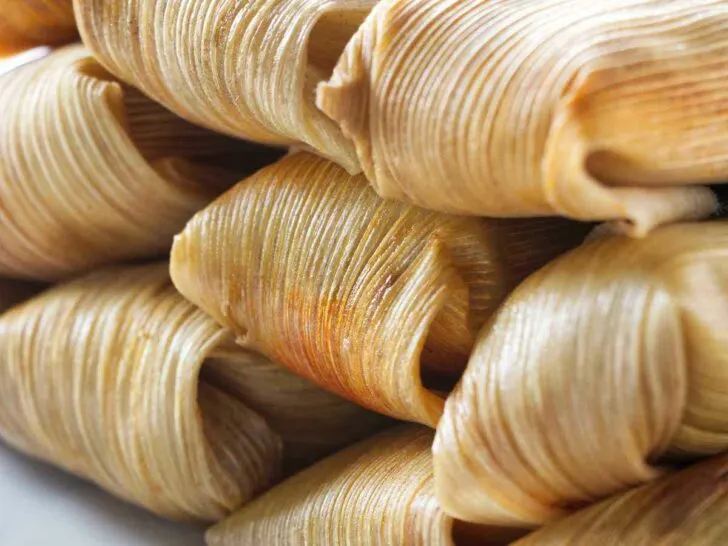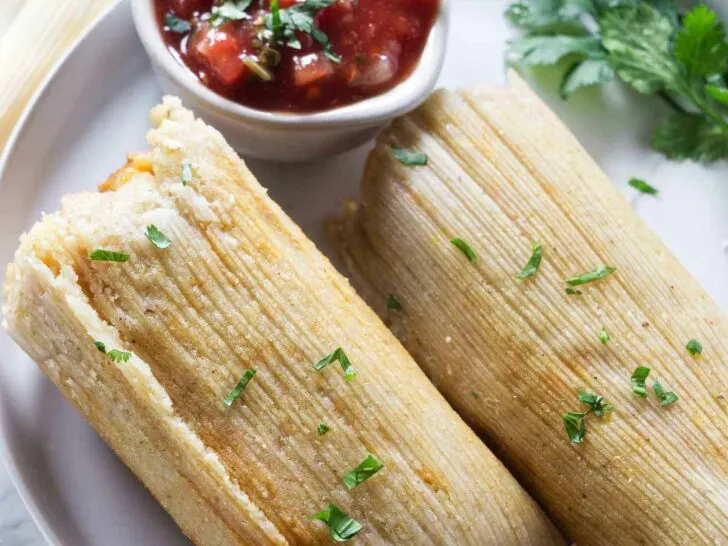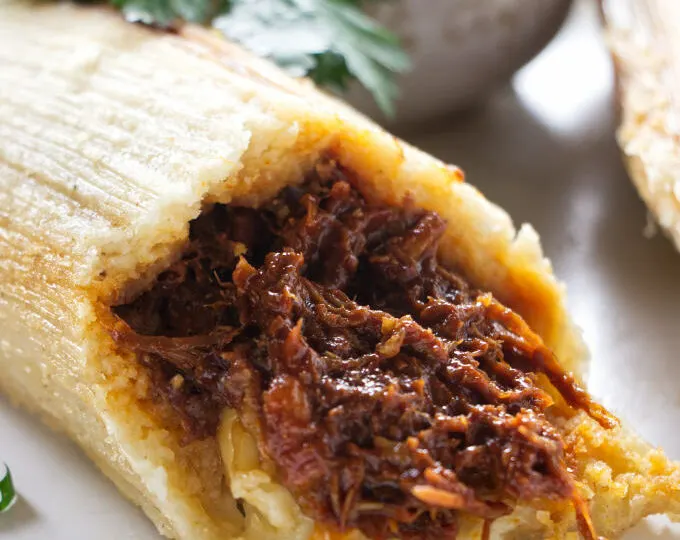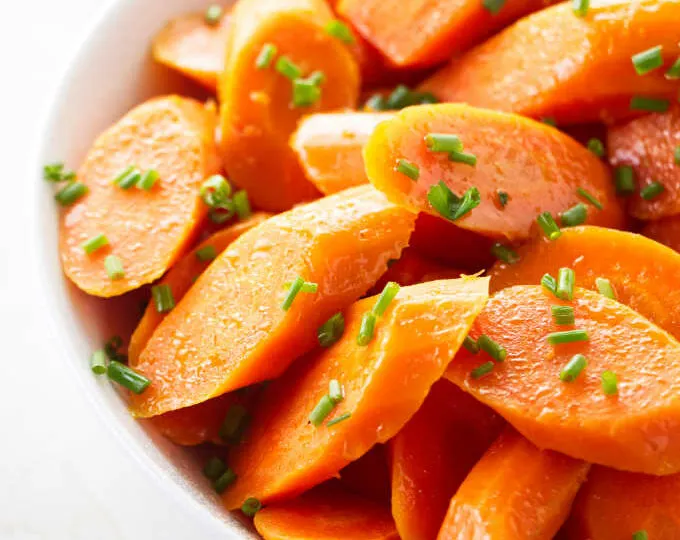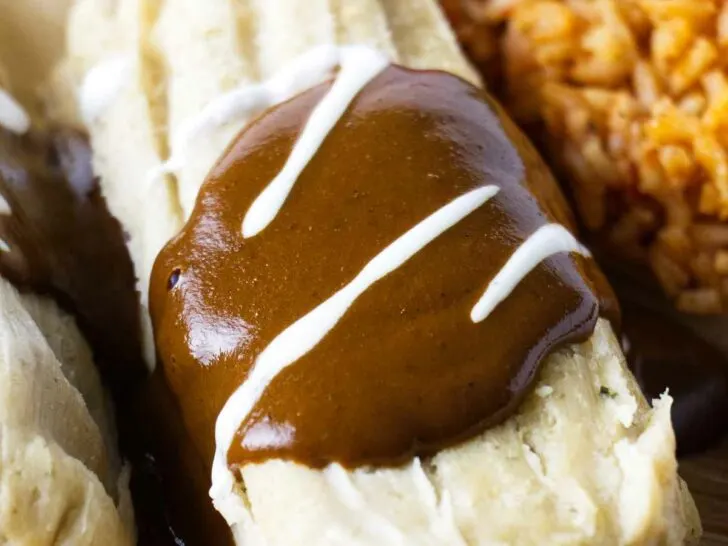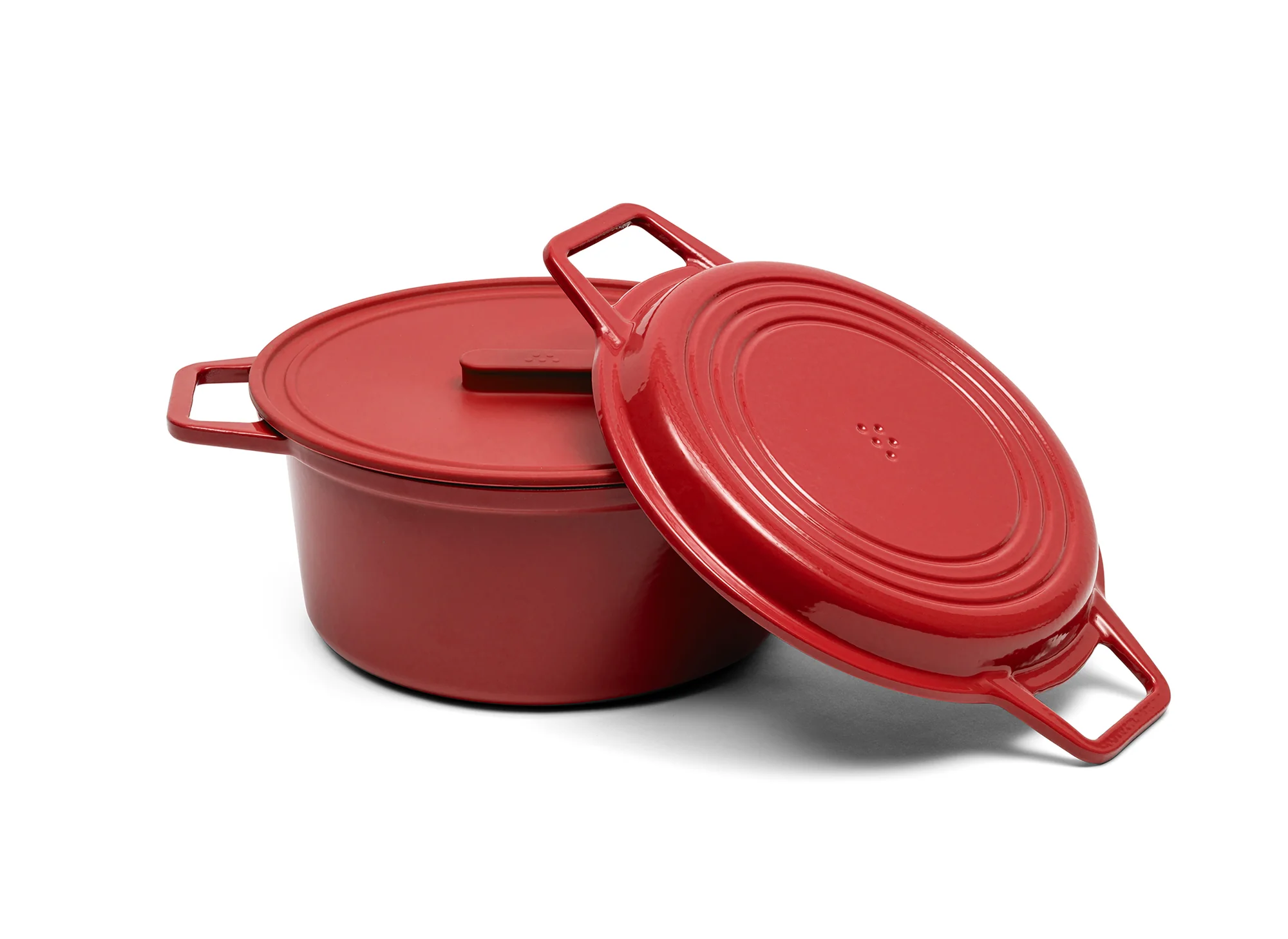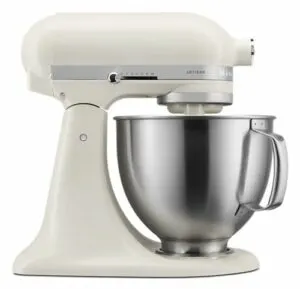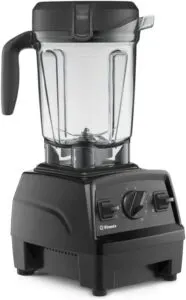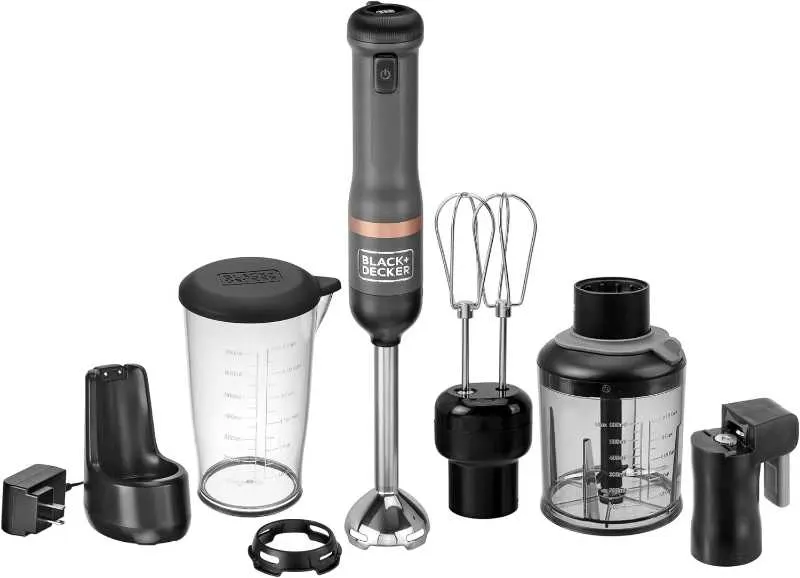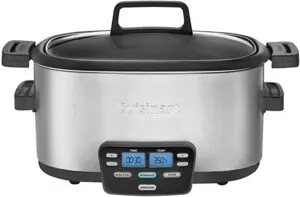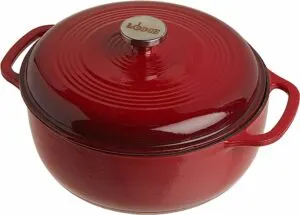Ah, tamales—the comfort food that brings families together during holidays, special occasions, or even just a cozy weekend. If you’ve found yourself wondering, “how do I cook tamales?” you’re in the right place.
We’ll explore not just one, but three different ways to cook these delicious parcels of joy: the traditional steamer, the ever-convenient Instant Pot, and even your trusty oven. And that’s not all. We’ll also delve into the art of tamale dough, explore various fillings, and provide tips for storing and reheating. So grab your corn husks and let’s get started on your recipe!
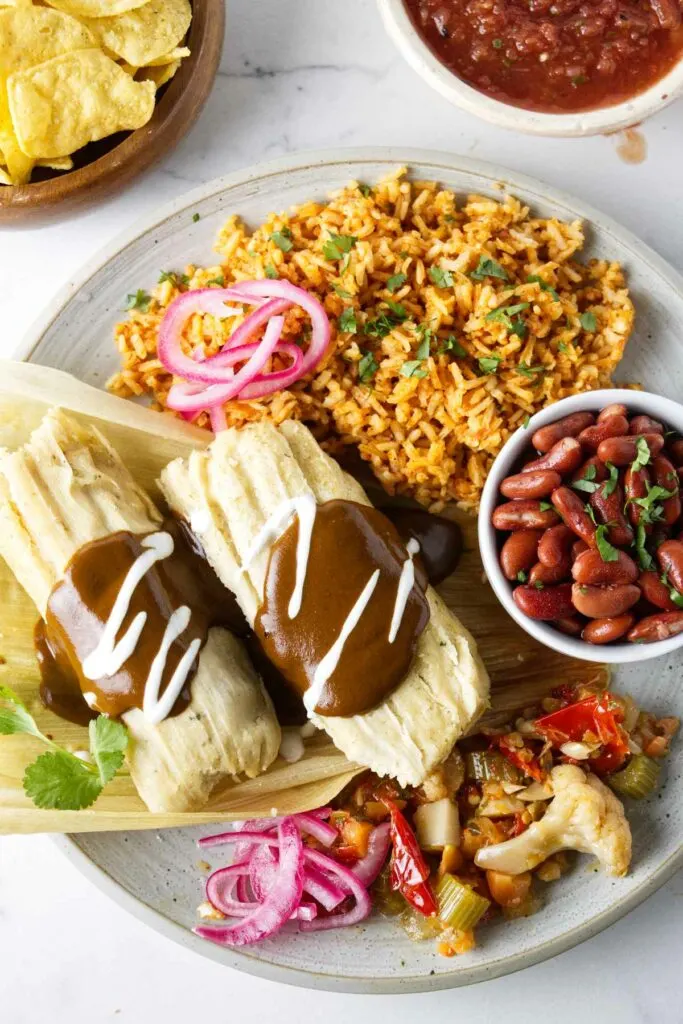
Traditional Ingredients to Make Tamales
- Masa harina (corn masa flour): If you aren’t familiar with masa harina, see my explanation below. This is the most essential ingredient if you want a recipe for authentic tamales.
- Baking powder. The leavening isn’t an essential ingredient but helps give the masa a lighter texture.
- Salt. You really can’t skip the salt, even if you are making sweet tamales. The salt enhances the flavor of the masa dough.
- Fat: Traditional tamales use lard or beef tallow. I personally prefer the flavor of butter and usually use that. You can also use oil or even shortening.
- Liquid: I like to use chicken broth or beef stock for savory tamales, but almost any liquid will work. Some examples are vegetable broth, water, milk, or even fruit juice for sweet tamales.
- Filling: Most tamales have a filling that can range from slow-cooked pork to a simple cheese mixture. This part of the tamale allows for endless culinary creativity, as you can use almost any combination of meats, cheeses, vegetables, and even fruits to personalize your tamales recipe.
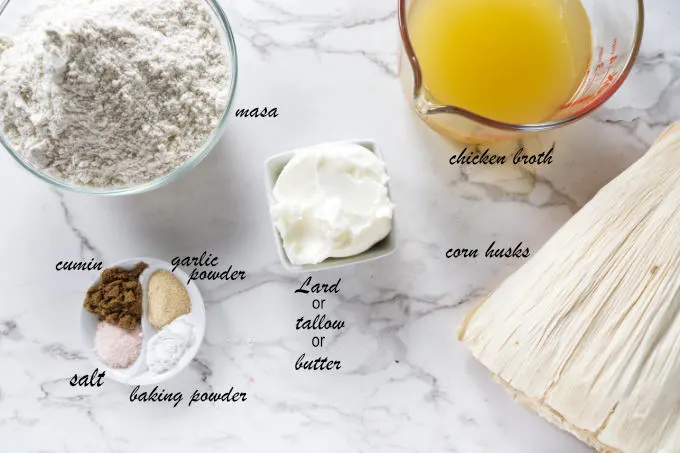
Understanding Masa Harina: The Cornerstone of Authentic Tamales
Unlike regular cornmeal, masa harina is made from corn that has undergone a special preparation process known as nixtamalization—where it’s soaked, cooked, and then dried before being ground. This process gives the flour a unique texture and flavor that is essential if you want a recipe for authentic tamales. If you see ‘instant’ on the package, it’s a quick-cooking version, which is the type I usually go for when making our tamales.
Preparing the Recipe for Homemade Tamales
Before diving into the nitty-gritty details, here’s a simplified roadmap of the recipe for making tamales. It breaks the recipe down into four main parts: prepping the corn husks, making the filling, making the masa, and finally, assembling your tamales. The goal here is to show you that while there are multiple steps, each one is straightforward and approachable.
- Prep Corn Husks: Soak in hot water until soft.
- Make Filling: Prepare your chosen filling and set it aside (the filling is usually pre cooked).
- Make Masa: Beat in the lard or butter until light and fluffy, then add the dry ingredients. Gradually add broth until it reaches a spreadable consistency.
- Assemble Tamales: Lay a corn husk flat, spread masa on top, then add your favorite filling. Fold and seal the tamales.
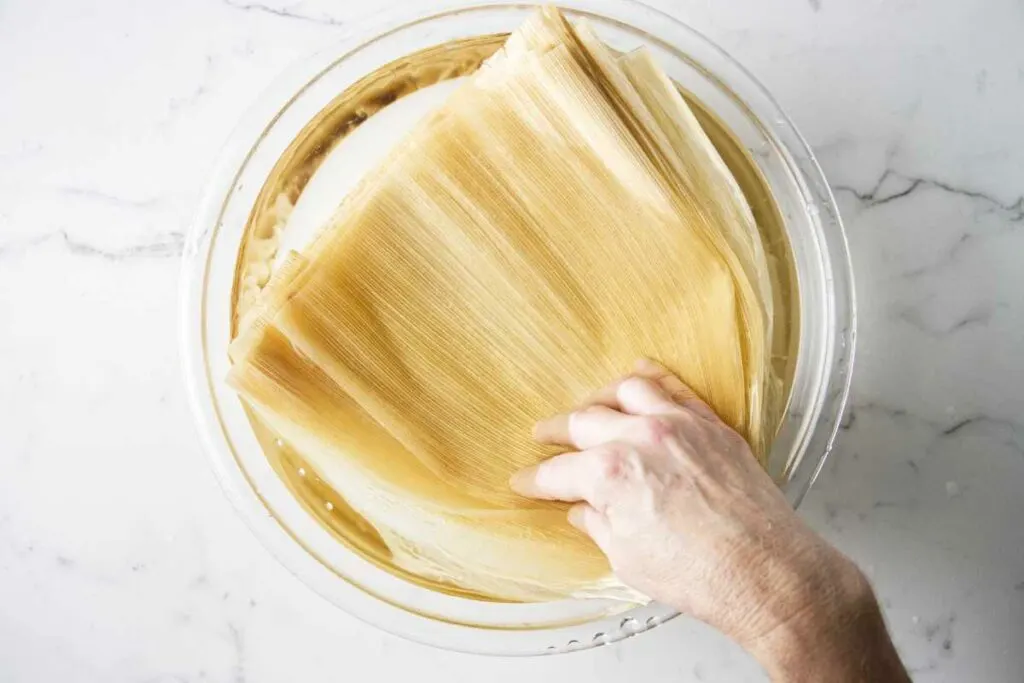
Filling Ideas
When it comes to tamales, the filling options are as diverse as your imagination. From classics like pork and chicken to veggie-centric or even sweets like fruit or dulce de leche, the sky’s the limit.
Meat Options:
- Pulled Chicken Tamales: Seasoned with garlic, onions, and a touch of smoked paprika.
- Shredded Beef: Cooked in a mild tomato and chili sauce.
- Pork Tamales: Slow-cooked pork is one of the most traditional ingredients.
Vegetarian Choices:
- Black Beans and Cheese Filled Tamales: A classic combo, enhanced with a touch of cilantro.
- Tamales with Roasted Vegetables: Think zucchini, bell peppers, and onions, maybe even spiced up with some chili flakes.
- Roasted Poblanos and Cheese Tamales: Charred poblano peppers paired with a mild cheese like Monterey Jack.
Seafood:
- Shrimp and Cilantro-Lime Tamales: Cook shrimp with a splash of lime juice, garlic, and cilantro.
- Tamales with Fish and Olives: A Mediterranean take on tamales with flaky white fish and briny olives.
- Crab and Shrimp Tamales: Mix lump crab meat and small cooked shrimp with a creamy garlic sauce. A dash of Old Bay seasoning could really bring it together.
Sweet Treats:
- Apple Cinnamon: For dessert tamales, think of an apple pie-like filling with a touch of cinnamon and nutmeg.
- Pineapple and Coconut: A tropical treat that brings some sweetness into the mix.
If you are wondering “how do I make sweet tamales?,” we have a recipe for that as well.
Cooking the Tamales
Cooking tamales is a process you can tailor to fit your kitchen setup and schedule. While the stovetop method might be the most traditional, modern appliances like the Instant Pot and even your trusty oven, offer alternative ways to get that tender, steaming perfection
No matter which recipe you choose, each method brings its own set of advantages that might just make it your go-to technique for making tamales.
How to Steam Tamales on the Stovetop
Stovetop steaming is the classic method for cooking traditional tamales. It allows for precise control over heat and timing, making it a favorite for those who like to stick to tradition.
Steaming tamales on the stovetop is a classic approach, but it comes with some drawbacks. First, you’ll need a pot that is tall enough for the tamales to stand upright.
Additionally, the water evaporates pretty quickly if the pot isn’t sealed well. Keeping track of the steam can be a bit tricky since you can’t see the water boil. A good workaround is to listen for the sound of a coin clanking around in the boiling water. If it stops clanking, you need to add more.
Another drawback is that a tamales steamer is pretty large and unless you make tamales on a frequent basis, it may be inconvenient to store.
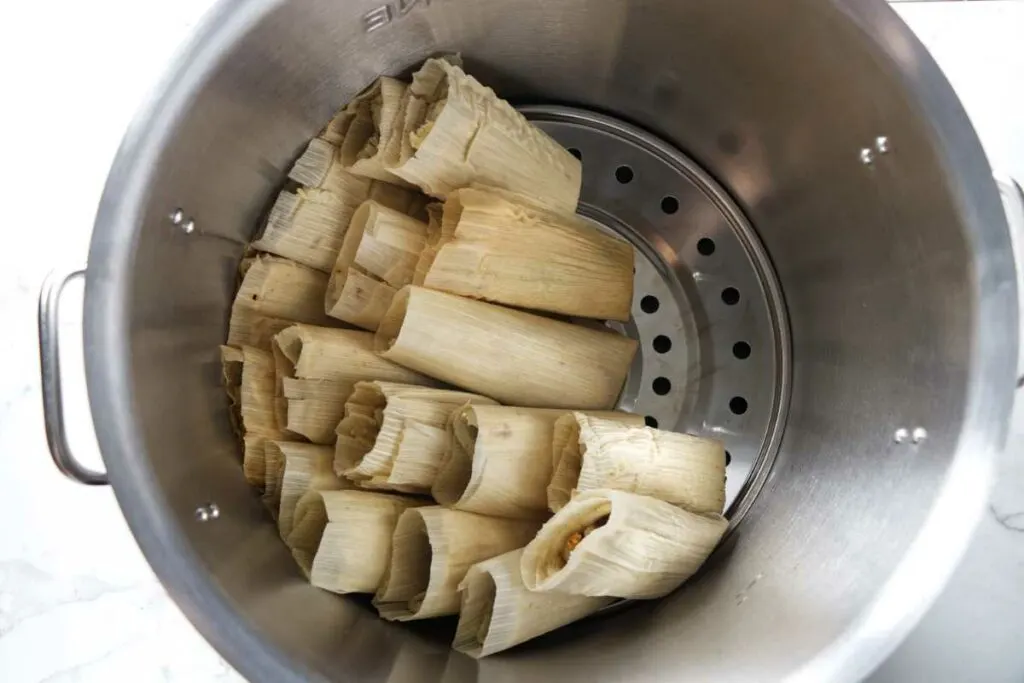
- Prep Pot: Fill the bottom of a large pot with 2-3 inches of water so it an boil and create steam. Add a coin for a helpful audio cue for boiling.
- Insert Steamer: Place a steamer basket or rack in the pot.
- Arrange Tamales: Set the tamales upright in the steamer, open-side up. Pack them closely to help them stay in position.
- Cover and Steam: Lay a towel or extra corn husks over the top of the tamales before sealing the pot with a lid. Bring the water to a boil, then reduce to a simmer. Cook and let the tamales steam for 60-75 minutes.
- Listen: Keep an ear out for the coin; if it stops jingling, top the pot off.
- Test the tamales: After cooking, remove one tamale and check if the dough sticks to the husk to determine if they’re done. If you can pull the husk away without it sticking to the masa dough, the tamales are done.
- Cool: Allow the steamed tamales to sit for 10 minutes before serving.
Cooked to Perfection in an Instant Pot
The Instant Pot offers a fuss-free way to steam tamales, taking away the need to monitor water levels thanks to its excellent sealing mechanism. However, the trade-off here is the limited cooking space. If you have a large batch of tamales, you’ll likely have to cook them in multiple rounds. But for smaller batches, the convenience and set-it-and-forget-it nature of the Instant Pot makes it an appealing option.
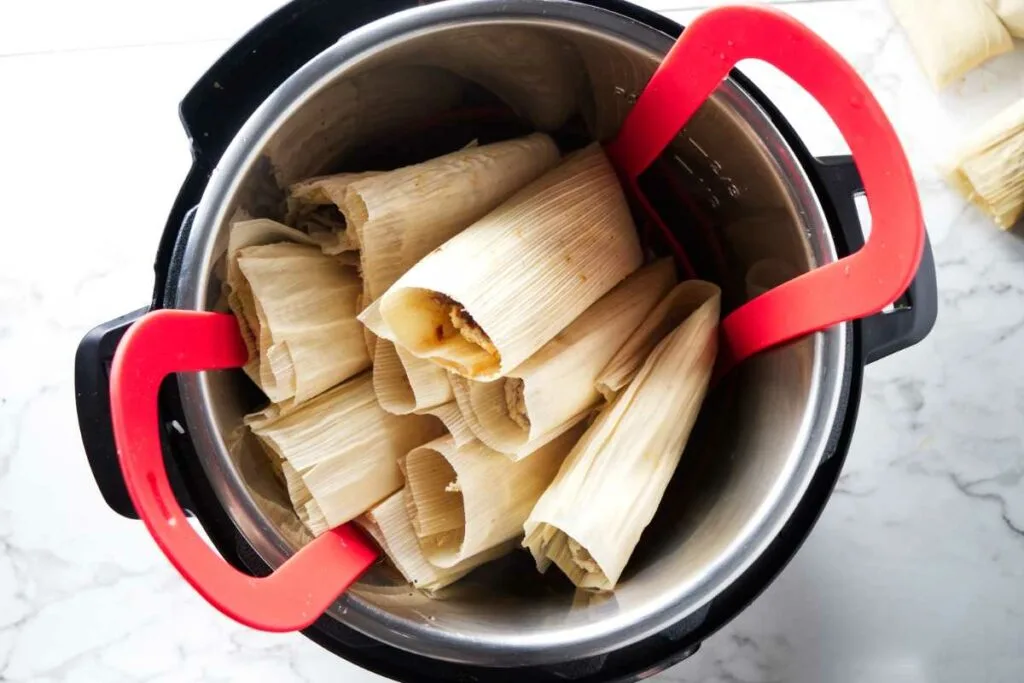
- Prep the Pot: Pour 1 cup of water into the inner pot and place a rack in the bottom.
- Arrange Tamales: Stand the tamales upright on the steam rack, open side facing up. Make sure they’re snug to help them stay in position.
- Seal and Cook: Secure the Instant Pot lid, and set to high pressure for 30 minutes.
- Natural Release: Allow for a 10-minute natural pressure release before manually releasing any remaining pressure.
How to Cook Tamales in the Oven
If you find yourself without a stovetop steamer or Instant Pot, the oven can be a reliable alternative for cooking your tamales. We set the range temperature to a gentle 225°F, just above water’s boiling point, to generate the necessary steam without introducing too much dry heat. This specific temperature ensures that your tamales cook in a moist environment, closely mimicking the effect of steaming.
I opt for a turkey roasting pan for this method because it provides ample space for a large batch of tamales, and its built-in rack is perfect for elevating them above the water. This setup creates a makeshift steamer that helps the tamales cook in a moist environment.
While this method is accessible and straightforward, keep in mind that the oven’s heat can be a bit drying. You’ll want to monitor your water levels closely to prevent the tamales from drying out. Using a turkey roasting pan also allows a larger surface area to evaporate, so be especially vigilant about maintaining the water level so the tamales steam instead of roast.
After following your favorite recipe for tamales, follow these steps to steam them in the oven.
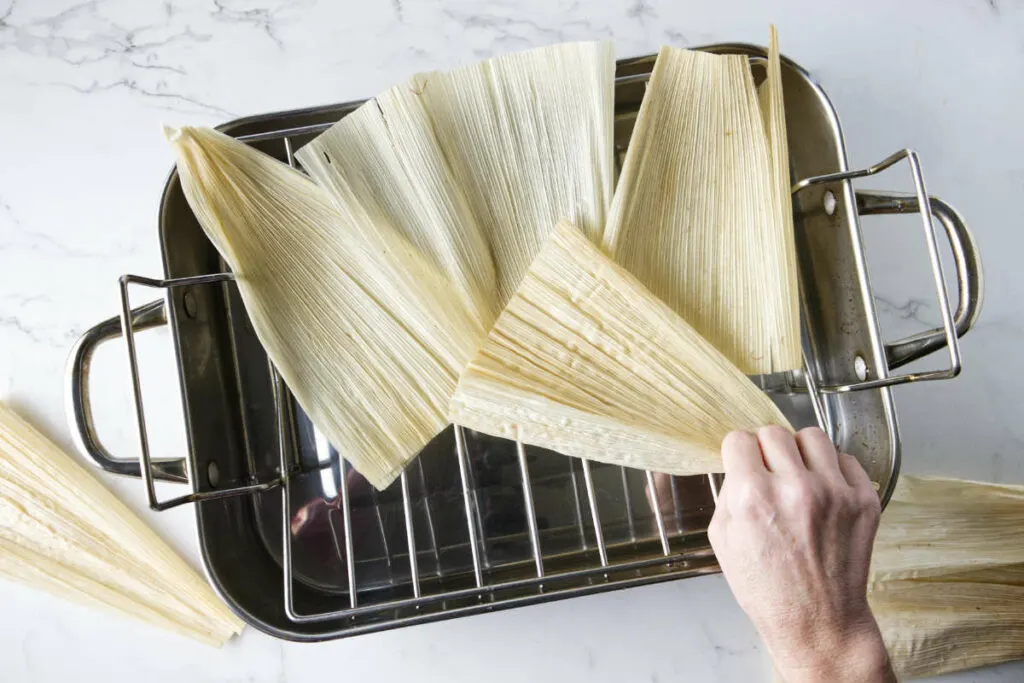
- Preheat: Set your oven to 225°F.
- Prepare Roasting Pan: Pour some boiling water into the bottom of a turkey roasting pan.
- Set Up Rack: Place the roasting rack into the pan and lay some corn husks over the rack (this will prevent the tamales from falling through the rack.
- Arrange Tamales: Place your prepared tamales on the rack on top of the corn husks. You can stack them, but try not to go beyond two layers to avoid squishing them.
- Seal with Foil: Tightly cover the roasting pan with aluminum foil to lock in the steam.
- Cook: Put the roasting pan into the preheated range. Periodically peek on the tamales to make sure the water hasn’t evaporated and add more if needed.
- Test for Doneness: Cook tamales for 45 to 60 minutes. Carefully unwrap one tamale to check if it’s cooked through. The masa should easily pull away from the husk.
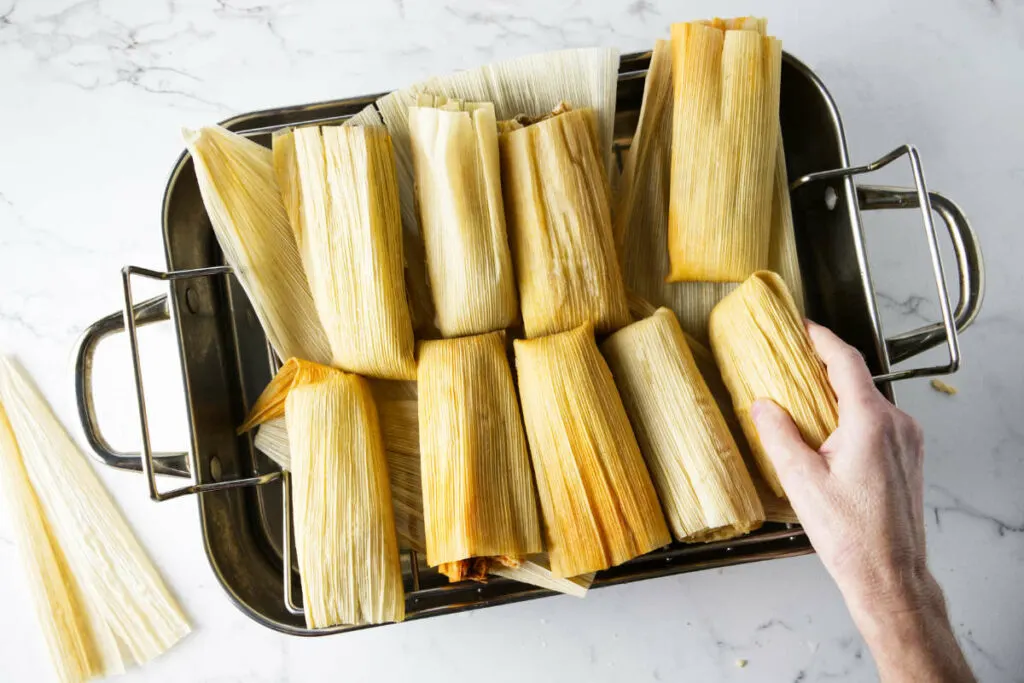
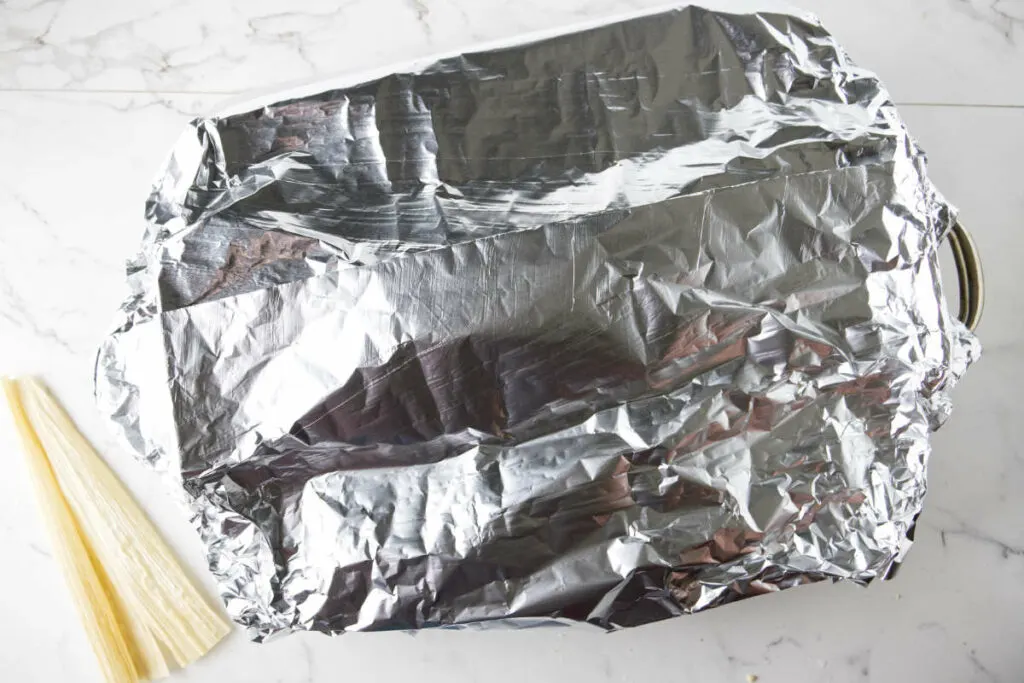
An alternate way to bake the tamales with steam is to use a Dutch oven as long as it is tall enough to hold the tamales upright. Follow the same steps we used to steam the tamales on the stovetop except place them in the oven to steam at 225°F. These methods work with any tamales recipes, even dessert tamales.
Avoiding the Pitfall of Soggy Tamales: What You Need to Know
One issue you might encounter when making tamales is the worry that they’ve turned out too soggy. But here’s the thing: freshly cooked masa dough is supposed to feel soft—almost too soft.
If you poke at the tamales the second it’s out of the steamer, you might think you’ve got an undercooked mess on your hands. Don’t worry; this is a normal part of the process.
What’s happening is that the masa needs a bit of time to set. Think of it like letting a steak rest after it comes off the grill. Give your tamales about 10 minutes to firm up a bit. This doesn’t mean they’ll become tough; they should still have a slightly soft and tender texture.
So if you find yourself questioning the readiness of your tamales, just remember: they need their beauty rest too!
If the tamales feel soggy after they rest for 10 minutes, then you may need to cook them a bit longer.
Another reason your tamales might still feel soggy even after resting could be due to excessive moisture during the cooking process. This can happen if you add water directly over the tamales when replenishing the steaming pot. To avoid this, make sure to pour the liquid down the sides of the pot, avoiding the tamales themselves. This will help keep the steam at the right level without making your masa a waterlogged mess and turning into soggy tamales.
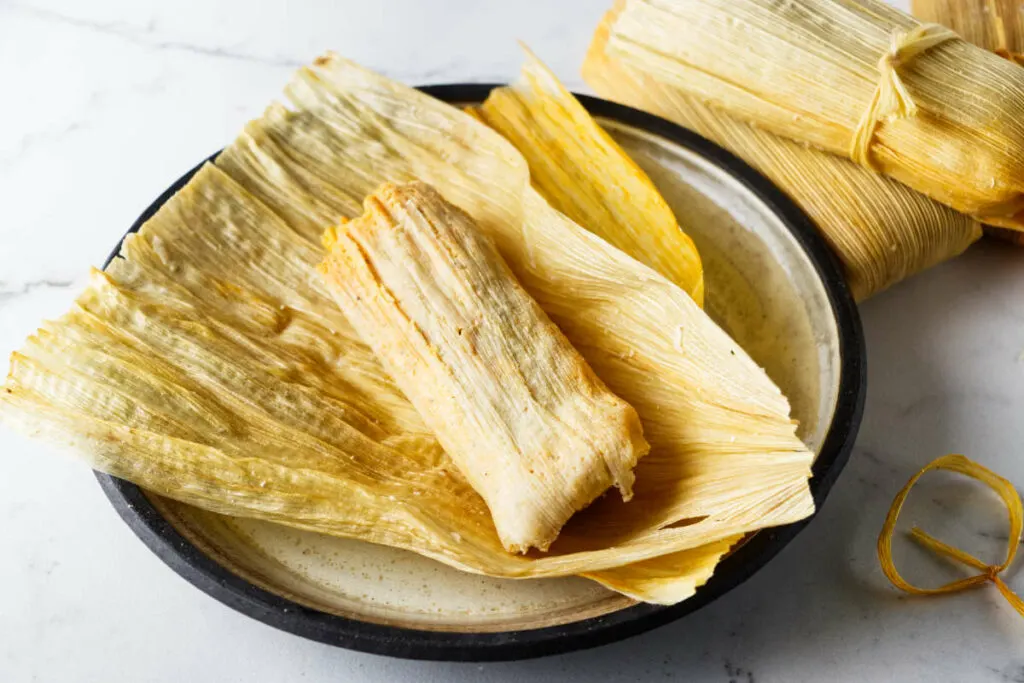
How to Reheat Tamales
When it comes to enjoying tamales, the second time around is just as good as the first (provided you know how to reheat them properly, of course).
Here are several easy and effective methods for reheat tamales, whether using the stovetop, microwave, or even an Instant Pot recipe. So don’t let those leftover tamales go to waste; let’s dive into how to make them taste new again!
- Stovetop: Cook the tamales in a steamer pot for 15 to 20 minutes. This method is effective and retains the original flavor and texture of the tamales.
- Microwave: Wrap the tamales in damp paper towels. Microwave on high for 1-2 minutes, checking halfway through to make sure they don’t get overcooked. The biggest drawback to the microwave is that the tamales can overheat in spots and make them tough.
- Oven: Preheat your oven to 225°F. Wrap each tamale individually in aluminum foil and give them 10-15 minutes of cooking time.
- Instant Pot: Add a cup of liquid to the Instant Pot and place the tamales on a rack. Cook on high for 10 minutes.
- Rice Cooker: Reheating tamales in a rice cooker is a pretty nifty method. The rice cooker’s steam setting simulates the original cooking process, helping to retain the tamales moisture and flavor. Just prep the cooker as you would for rice and cook the tamales for 10 to 15 minutes.
- Air Fryer: This is basically a mini convection oven and it will dry tamales out pretty quickly. However, it will work in a pinch. Wrap the tamales in aluminum foil and cook them at 200°F for about 8 minutes.
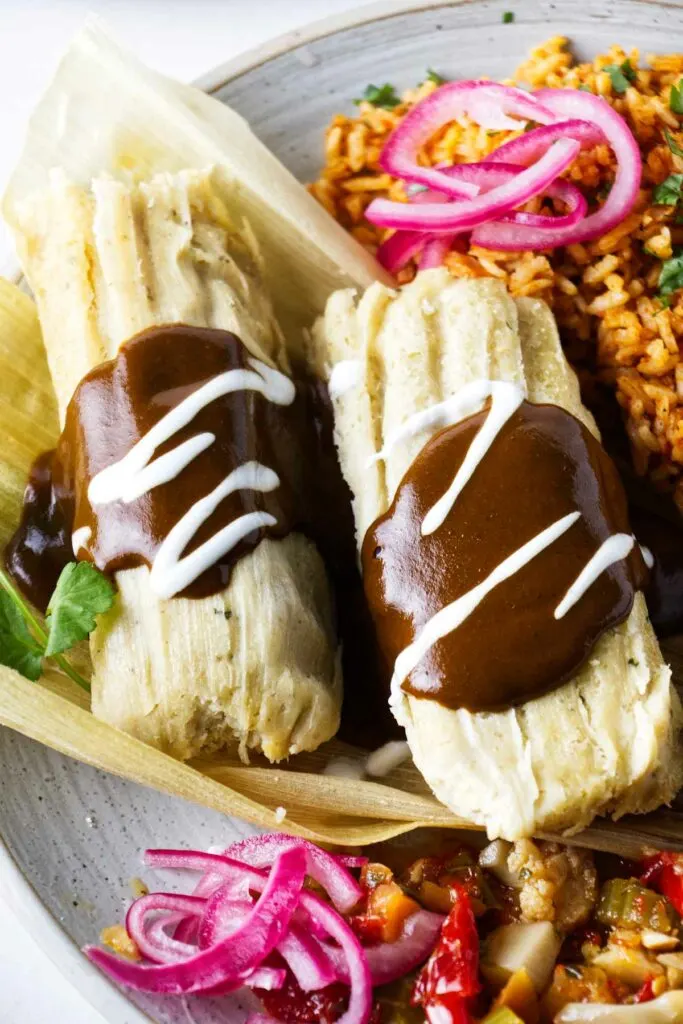
Wrapping It Up: Your Ticket to the Best Tamale Recipes
There you have it! Steaming tamales is an art as much as a science, and we’ve covered the A to Z of it. Whether you’re a fan of the classic stovetop method, love the convenience of the Instant Pot, or want to put your oven to good use, there’s a tamale-steaming method that fits your needs.
Each approach has its own perks, but the end goal is the same: tender, flavorful tamales you’ll be proud to share.
We dove into the essential tamales ingredients, the significance of masa harina, and even the potential pitfalls to watch out for.
With this guide, you’re more than equipped to take on the delightful task of tamale-making, whether it’s a holiday tradition or a new culinary adventure. So go ahead, gather your corn husks, and all your ingredients and make your favorite homemade tamale recipe worth remembering!
And if you want to know what to eat with tamales, check out our suggestions.


